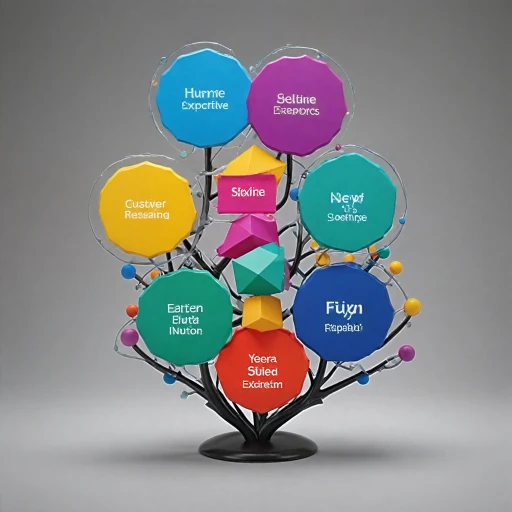
Understanding the Threat Landscape
Identifying the Dynamics of Workplace Violence
In the modern work environment, the prevalence of violence has become a critical issue for both employers and employees. Although workplace violence can result from numerous factors, such as personal conflicts or domestic violence spilling into the workplace, the threat landscape is complex and evolving. It notably poses risks to occupational safety and health, demanding proactive measures from employers and their human resources departments.
To navigate these challenges, it is crucial to thoroughly understand the reasons leading to violent behaviors, including those triggered by perceived discrimination or harassment. Legal protections under Title VII and various state and federal laws prohibit such conduct, ensuring that both all parties' rights are respected and upheld. However, companies face challenges in identifying potential threats without violating employment regulations.
There are severe penalties and legal implications for any adverse action taken against an employee without just cause. Consequently, employers must tread carefully and understand their responsibilities. Strategies for threat identification must align with legal frameworks to avoid accusations of discrimination or retaliation.
With this understanding, organizations can move towards effective solutions, such as providing reasonable accommodations for those affected by workplace violence or allowing sufficient sick leave for recovery from violence-related incidents. Ensuring health safety and fostering an environment where an employee victim or a family member feels supported is vital.
Another aspect to consider is the role of law enforcement in handling threats. Cooperation with local and state authorities is often necessary to address and manage more severe and immediate threats. Thus, companies must develop comprehensive action plans that outline the protocol for engaging relevant agencies while ensuring compliance with legal requirements.
Lastly, understanding the implications of employer suspension without pay in violent incidents can guide decisions when facing threatening behavior from an employee. Thoughtful consideration and adherence to best practices can aid in maintaining a safe and secure workplace.
AI's Role in Identifying Potential Threats
How AI Detects and Mitigates Workplace Threats
The role of AI in identifying potential threats in the workplace is multi-faceted and crucial for maintaining the safety and well-being of employees. In the dynamic landscape of work environments, violent threats against management and staff are a growing concern. Businesses must adopt strategies that focus on quick identification and mitigation to protect both employee rights and organizational interests.
AI systems are designed to analyze vast amounts of data, a capability which proves beneficial in accurately identifying patterns indicative of imminent threats. They utilize sophisticated algorithms to detect anomalies in behavior and communication among employees. By scanning emails, social media interactions, and internal communication platforms, AI can highlight potentially threatening behavior before it escalates to violence.
In integrating these technologies, employers and human resources departments must be acutely aware of privacy issues and the delicate balance between surveillance and employee rights. It's essential for AI tools to operate under strict ethical guidelines that align with employment laws and privacy standards. For example, AI systems can alert HR teams to threats like harassment, discrimination, or even violence without compromising the privacy of employees' communications.
Furthermore, these tools frequently require input from local state and federal entities to ensure compliance with laws prohibiting discrimination and adverse action. Employers must provide reasonable accommodations to employees if AI tools indicate potential threats related to domestic violence or if a family member is involved.
While AI's analytical capabilities provide extensive insights, the human element remains critical. A nuanced understanding of the context and culture within a workplace aids AI systems in making more precise threat assessments. Proper training for HR personnel on how to interpret AI analyses is equally important to prevent misinterpretations that could lead to unintended adverse actions or violations of employee rights.
For more information on this technological advancement in human resources, it's vital to understand the duration of ADA leave and related considerations. This insight provides additional context on how such tools align with providing accommodations in accordance with existing laws.
Implementing AI Solutions for Threat Assessment
Implementing AI for Threat Assessment Effectiveness
Integrating artificial intelligence into workplace safety involves utilizing advanced algorithms and machine learning processes to assess potential threats. Employers and human resources departments face increasing pressure to effectively manage employee-related violence, including incidents of violence and harassment. The need for rapid, accurate assessment has driven the adoption of AI solutions in this context.
AI can provide comprehensive threat assessments by analyzing data patterns and detecting anomalies in behavior that may indicate potential threats. These systems can assess information from various sources within the workplace, including emails, social media, and internal communication channels, to identify threatening behavior before it escalates into violence.
This proactive approach aligns with state and federal regulations that require employee safety while also respecting employee rights. For instance, employment laws emphasize the prohibition of adverse action against employees who report violent threats or discrimination. When applying AI in threat assessment, employers must ensure that the system adheres to legal frameworks protecting employees’ privacy and rights. This includes providing reasonable accommodations when necessary and ensuring that the AI system does not inadvertently target protected employees or those reporting issues.
Employers implementing AI-based solutions will benefit from clear policies and guidelines, communicated effectively to employees. Transparency in AI usage reinforces trust among employees, a critical component in effectively managing workplace safety and health.
Ai-driven threat assessment tools provide significant benefits to workplace safety. However, they must be implemented with a careful approach, balancing technological advancements with human elements, such as empathy and understanding, to ensure that all employees feel safe and supported at work. For more insights, you may want to explore the impact of temporal proximity on AI in HR.
Legal and Ethical Considerations
Navigating the Legal and Ethical Terrain
Addressing workplace threats using artificial intelligence brings into focus several legal and ethical considerations. Given the sensitive nature of monitoring and evaluating employee behavior, employers must tread carefully to avoid infringing on employee rights and privacy. Employers are legally obligated to provide a safe workplace environment, addressing any workplace violence or threatening behavior decisively. However, these efforts must align with labor laws prohibiting discrimination and retaliation. Implementing AI solutions demands compliance with relevant state, federal, and local laws, ensuring that the technology respects human rights and protects employees from adverse actions.- Privacy Concerns: AI systems often process significant amounts of personal data, raising concerns over employee privacy. Employers must ensure that data handling aligns with privacy laws and employees are informed of the monitoring processes.
- Non-Discrimination: AI tools should not unintentionally discriminate against any particular group. Employment laws, including Title VII, prohibit discrimination based on race, color, religion, sex, or national origin. AI systems must be audited regularly to prevent biased outcomes.
- Reasonable Accommodations: In situations involving employees adversely affected by workplace incidents or victims of violence, employers must consider providing reasonable accommodations. This includes adjustments to work environments or roles to support health and safety needs.












